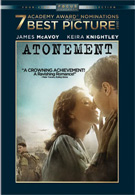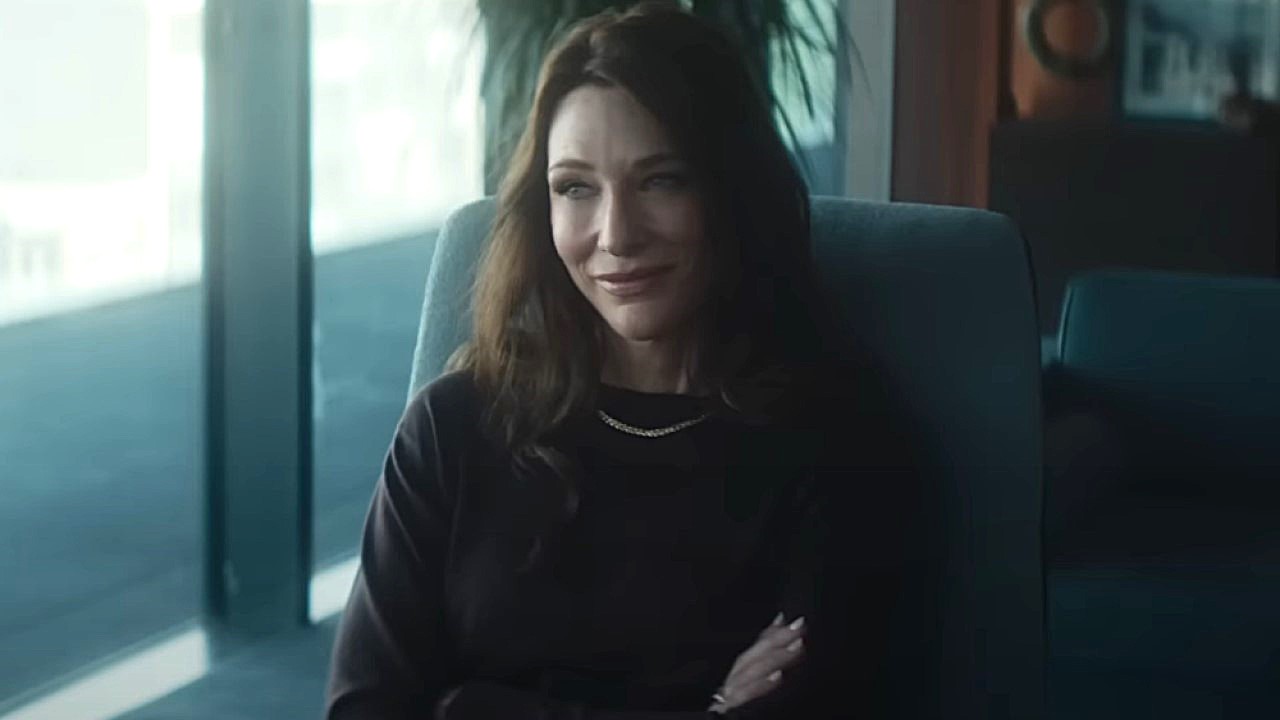Despite the fact that I’m a “film critic,” I typically don’t care for the hardcore artistic, Merchant Ivory style, British films. When those stiff upper lips start spouting about the problems of the bourgeoisie, I feel the urge to take a nap. Unfortunately, that is frequently the type of movie that the Academy of Motion Picture Arts and Sciences eats up. Sure, film is an art form, but it doesn’t have to be snobbish in order to prove it is art does it? Thankfully, Atonement manages to shake off that stiff upper lip despite a pompous start, and winds up telling a rather somber tale with some real emotion to it. Atonement, based on the novel by Ian McEwan, has the interesting characteristic of not having its primary story dominate the movie. The story that takes up most of the movie is the shattered romance of Cecilia Talllis (Keira Knightly) and Robbie Turner (James McAvoy). What should have been an idealistic young love between the two is torn apart when Cecilia’s younger sister, Briony (Saiorse Ronan) accuses Robbie of the rape of her cousin. As a result, Robbie is sent to prison and eventually sent farther to serve in the war.
Regardless of how much time Knightly and McAvoy are on screen, however, this is Briony’s tale of “atonement,” having to live with her mistaken accusation and the repercussions it has, both for her and her family. As we learn from the film’s opening, Briony is an aspiring writer, so a lot of the movie is tempered by her artistic abilities, although the audience may not be aware of that for some time. As a result, the picture is able to shift back and tell its story from multiple perspectives, cleverly filling in holes the viewer may not have even known was there. The result is a film that artistically plays with perspective and the concept of the storyteller, while deceiving the audience into thinking it’s just focusing on a romance story for much of its running time.
In the beginning, Atonement feels like it belongs right alongside Merchant Ivory fare. Its regal environment seems like something out of A Room With a View - something that shouldn’t seem like too much of a surprise considering director Joe Wright’s success with an adaptation of Jane Austen’s Pride and Prejudice. Even the characterization seems hoity-toity, as Knightly’s Cecilia strips down to her slip in front of would-be-suitor Robbie without the young lad even blinking an eye. Thankfully, as the movie exposes the same scene from another point of view, and continues to do so with other initially dryly-received scenes, the pretentiousness of the atmosphere fades away, until something more real and accessible remains. Unfortunately, this also correlates with the division of the young lovers, which means the audience shares less in the romance than they do with the heartbreak that exists for most the rest of the film. If you don’t care for heart-rending romances, this should be a warning that Atonement will not be for you.
The Academy honored Atonement with seven Oscar nominations, including art direction, cinematography, costumes, and the movie’s score. Seeing the picture, there’s no real challenge for these nominations. Atonement is a visual work of art and relies heavily on all of these aspects to create its world, which is sometimes picturesque and sometimes torn to shreds. The story takes place in a variety of settings, from the calm yet creepy pastoral setting of the English countryside at the beginning, to the horrors of Dunkirk beach during the British retreat, where the worst side of retreat preparations are shown. Through the incredible work done in these Oscar nominated categories, the worlds of Atonement draw the viewer in and weight heavily on the emotional story being told while the Oscar winning score, which carries the rhythms of Briony’s typewriter, serves as a constant reminder that we are watching a story brought to life.
Of course, the movie wouldn’t be half as compelling if it wasn’t for the top-notch cast, assembled by Wright. Knightly proves yet again why she is more than just a pretty face, although it is hard not to lust after her a bit with some of the costumes she wears – she is an object of desire in the story after all. McAvoy shows a skill that had previously been untapped and will probably secure the romantic lead part for the actor for quite a while. While the cast includes other notables like Vanessa Redgrave, the pleasant surprise of the movie is young Saoirse Ronan (the movie’s sole acting Oscar nominee) who plays the younger version of Briony (Romola Garai takes over the role as the character ages into her late teens and Redgrave plays her in later years). Ronan’s wide-eyed wonder keeps her character from being annoyingly precocious, and makes it difficult to determine the motivation behind the accusation she makes of Robbie – is it naïve belief or puppy-love jealousy? The young actress has already secured her next big role in Peter Jackson’s adaptation of The Lovely Bones and I can’t wait to see what she can bring to that role, because her work here is nothing short of amazing.
Although the downcast content won’t appeal to fans who would prefer romantic comedies and happy endings (which the movie also has an interesting commentary on), Atonement is an incredibly compelling movie that manages to transcend the self-importance most movies of this type carry. The result is a movie that makes connections with the audience while providing a lot to contemplate after the credits roll. I’ve taken issue with movies recognized by the Academy in recent years, but I have to say that this is one the Academy got right. My biggest complaint with the DVD release for Atonement is something that is visible the second you pick up the movie. The cover art for the case is utterly horrific. A third of the cover is taken up by the announcement that the movie was nominated for seven Academy awards. I’m not against that sort of shameless plug for the movie’s award cred, but to sacrifice so much of the cover with such an announcement, reducing the real cover art down so much in size, seems a bit ridiculous. Still, if that’s my biggest complaint, the rest of the DVD can’t be all that bad, can it?
The film itself has a great transfer, with the video and audio quality we’ve come to expect from a DVD transfer. Played on an upscaling DVD player, the image is pretty high quality, although this is one of those movies that’s so visually stunning that going with a high definition option would be a good choice. A commentary by Joe Wright accompanies the picture and it’s informative, if not the most interesting listen. Wright has a lot of information to share, but he’s not the most enthusiastic speaker.
In the bonus materials, there is a selection of deleted scenes that also feature an optional commentary by Wright. He claims most of the material that was deleted was done so because of poor direction. The truth is most of it was cut because it just didn’t fit well or would have slowed the movie down too much. A couple of the short scenes are interesting (a 300-foot march by Robbie and his fellow soldiers as they make their way across the country is visually interesting if not the most compelling minute of film), but there is nothing lost by losing these from the main film.
There are also two featurettes on the DVD. “Bringing the Past to Life: The Making of Atonement” is a twenty-five minute look at how the movie was made along with focused sections about some of the movie’s more prominent filming locations, including the five minute tracking shot along the beach of Dunkirk. It is a fantastic featurette that really expands on some of the ideas behind the design of the picture, opening even more of the picture up for critical assessment. “From Novel to Screen: Adapting a Classic” is a very brief discussion about the adaptation of Ian McEwan’s novel and how Wright and scriptwriter Christopher Hampton revised Hampton’s initial script to remain even true to the novel.
It may not sound like a lot of content, but the two featurettes and the commentary manage to hit on most of topics movie fans would want to hear about a movie like Atonement. Add onto that a great presentation of the film and you’ve got quite the DVD. Just don’t judge this book adaptation by its cover.
Wait, Is Cate Blanchett Planning To Retire From Acting? Here’s What The Actress Says
If You Like Drop, There's Another Real Time Thriller You Need To Watch Immediately
'You Feel Like You’re On The Team With Michael Jordan.': The Handmaid's Tale Cast Shares What It's Like Working With Elisabeth Moss As She Directs, Stars, And Produces











